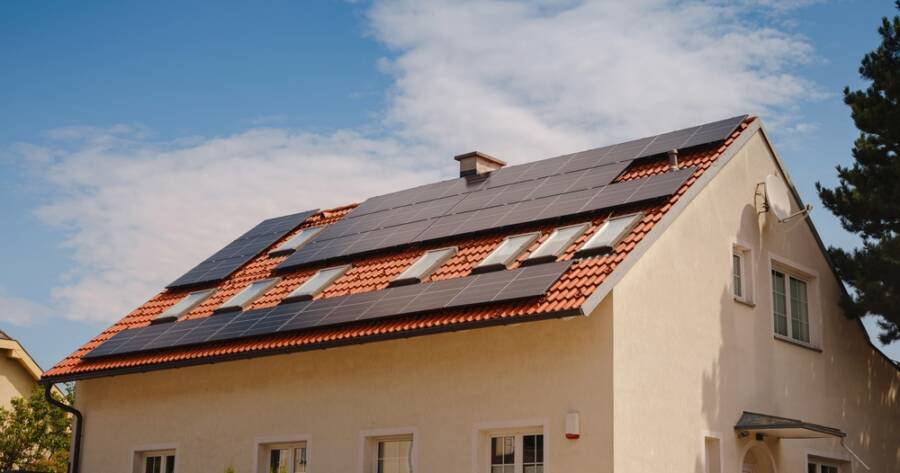With rising energy costs and increasing environmental concerns, solar power has become an attractive option for homeowners looking to reduce their carbon footprint and save money. In 2025, solar technology has evolved, offering more efficient and affordable solutions than ever before. Explore the best solar power options for your home, helping you decide which investments make the most sense for long-term savings.
Understanding Solar Power Options
Before diving into the specific solar power systems available, it’s important to understand how solar energy works. Solar panels, which capture sunlight and convert it into electricity, are the primary tool used to harness solar power. These panels are typically installed on rooftops, but ground-mounted systems are also an option. The energy generated can either be used directly in your home or stored in a battery for later use.
In 2025, there are several advancements in solar technology, including more efficient solar panels, better storage systems, and easier installation processes. These improvements are making solar power a viable option for a wider range of homeowners, whether you’re looking to install a small-scale system or a larger, more comprehensive energy solution.
High-Efficiency Solar Panels
One of the most significant advancements in solar power is the development of high-efficiency solar panels. Traditional solar panels have an average efficiency of around 18-24%, meaning that they can convert that percentage of sunlight into usable electricity. However, in 2025, new models have pushed this efficiency higher.
Monocrystalline solar panels are the most popular and efficient option available, with efficiency rates of around 22% or higher. These panels are made from a single silicon crystal, which allows them to convert sunlight into electricity more effectively. While they may cost more upfront, their increased efficiency and longevity make them a smart investment in the long run.
Polycrystalline solar panels, on the other hand, are a more affordable option with lower efficiency rates, generally around 16-18%. They are made from multiple silicon crystals, which reduces their energy conversion capacity but still provides a good option for homeowners with limited space.
For those who want the best performance, investing in high-efficiency solar panels is likely to be worth the cost, especially as technology improves and prices for these products continue to drop. More energy produced from the same space means greater savings on electricity bills.
Solar Battery Storage Systems
One challenge with solar power is that it only generates energy when the sun is shining. This means that without a way to store the energy, homeowners may still need to rely on traditional power sources at night or on cloudy days. Solar battery storage systems address this issue by storing excess energy for later use.
The most well-known brand for solar batteries is Tesla with its Powerwall system, but other companies are now offering similar products. These batteries can store energy produced during the day, allowing you to use it at night or during power outages. In 2025, the efficiency and affordability of solar batteries have improved, making them a more feasible option for homeowners.
While the initial cost of a solar battery can be high, the investment may pay off over time by reducing your reliance on the grid and giving you more control over your energy usage. If you live in an area with frequent power outages or high electricity rates, a solar battery may be a worthwhile addition to your system.
Solar Roof Tiles and Integrated Solutions
For homeowners who want a more aesthetically pleasing option than traditional solar panels, solar roof tiles are gaining popularity in 2025. These tiles are integrated into the roof itself, providing the same functionality as traditional panels while blending seamlessly into the structure of your home.
Companies like Tesla offer solar roof tiles that replace traditional roofing materials, combining the benefits of solar power with a sleek, modern design. These integrated solutions can be a good choice for homeowners building a new home or replacing their roof, as they eliminate the need for an additional installation process for panels.
Although solar roof tiles may come with a higher upfront cost than traditional panels, their energy efficiency and design may make them an attractive option for those who prioritize aesthetics along with functionality.
Community Solar Programs
For those who don’t have the option or budget to install solar panels on their homes, community solar programs provide an alternative solution. These programs allow homeowners to subscribe to a shared solar installation that is usually located offsite, often in a nearby solar farm. You receive a portion of the energy produced, which is credited to your utility bill.
Community solar programs are ideal for renters, people with shaded roofs, or homeowners who cannot afford the upfront costs of installing solar panels. In many cases, these programs are set up to provide electricity at a lower cost than traditional grid power. As community solar continues to grow in 2025, these programs are becoming more accessible and widespread, allowing more people to benefit from renewable energy without the need for personal installation.
The Future of Solar Energy for Homeowners
When considering solar energy for your home, it’s essential to evaluate your unique needs, budget, and goals. High-efficiency solar panels and solar battery storage may offer the most long-term benefits, but solar roof tiles and community programs provide viable alternatives depending on your circumstances.
Ultimately, solar energy is not just an investment in your home—it’s an investment in a sustainable future. With the ongoing advancements in technology, now is a great time to explore solar power options and make the switch to renewable energy.

